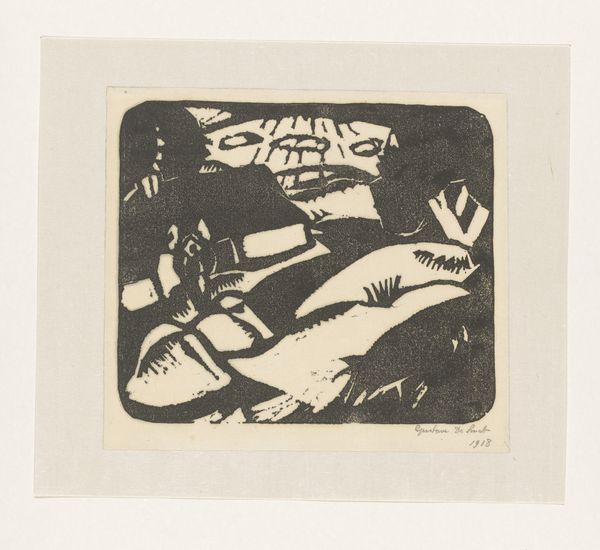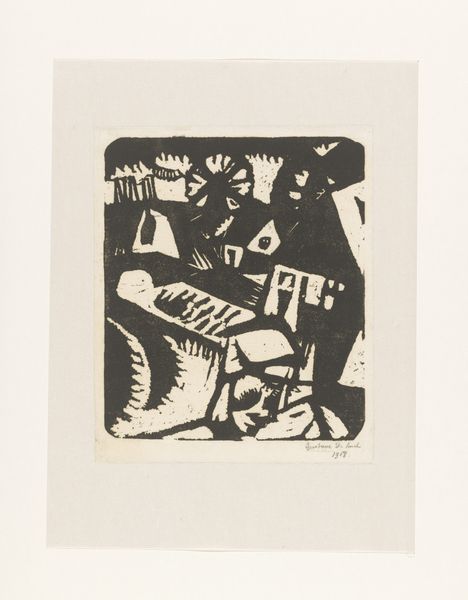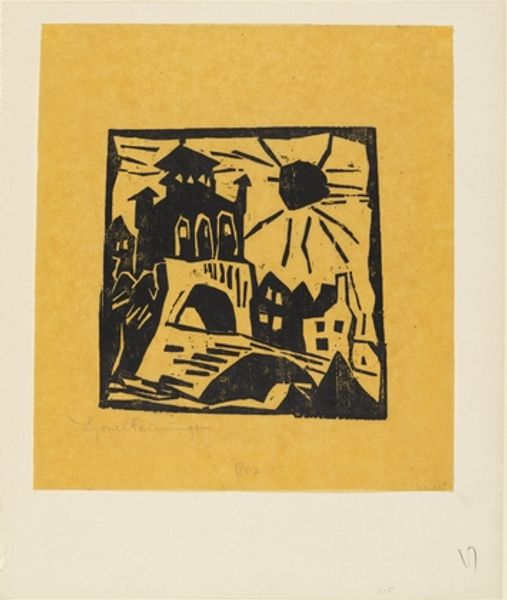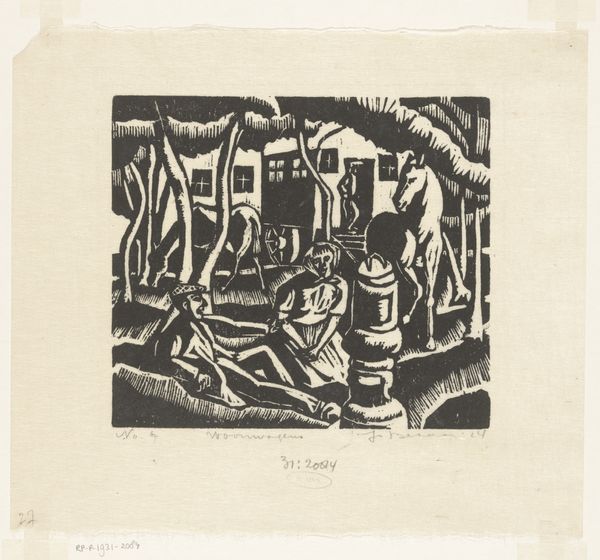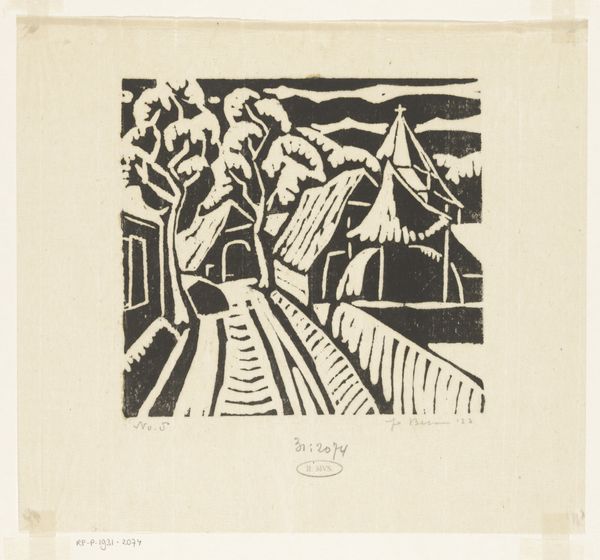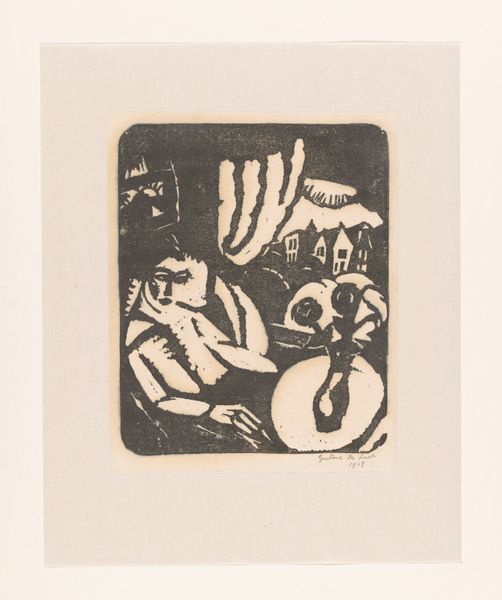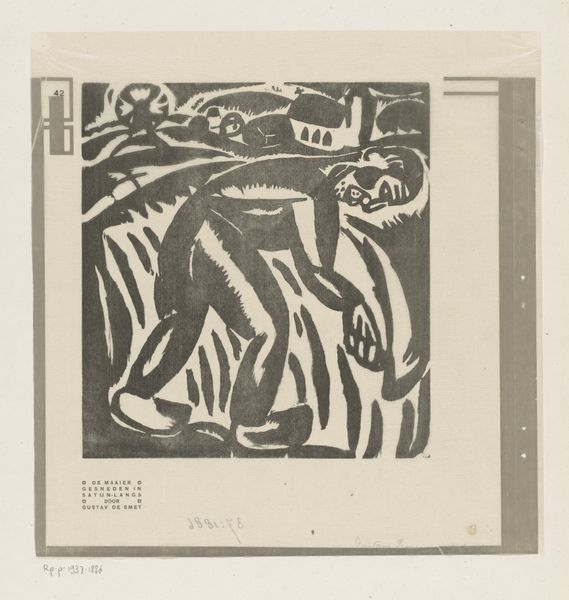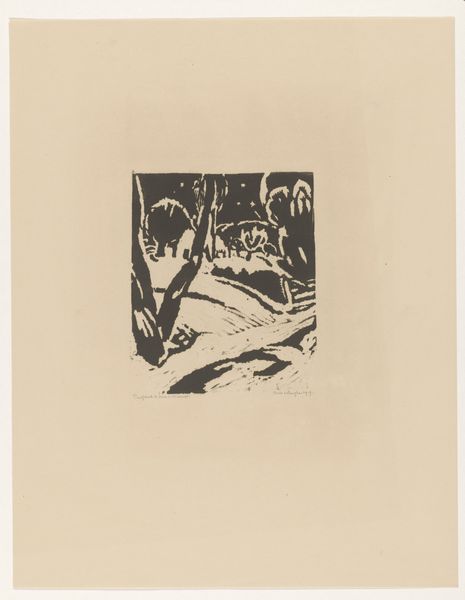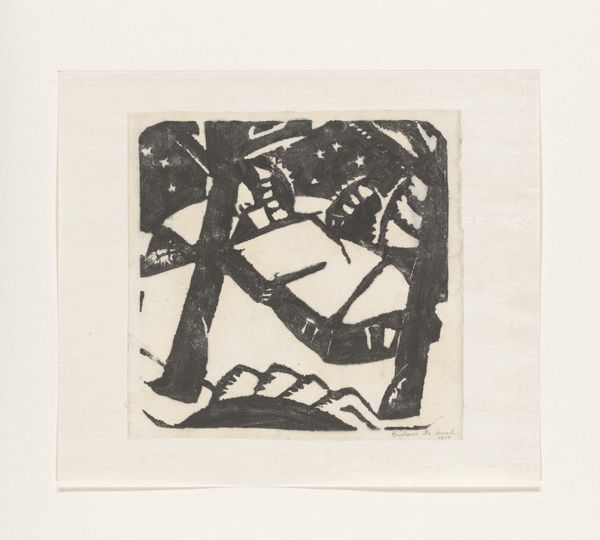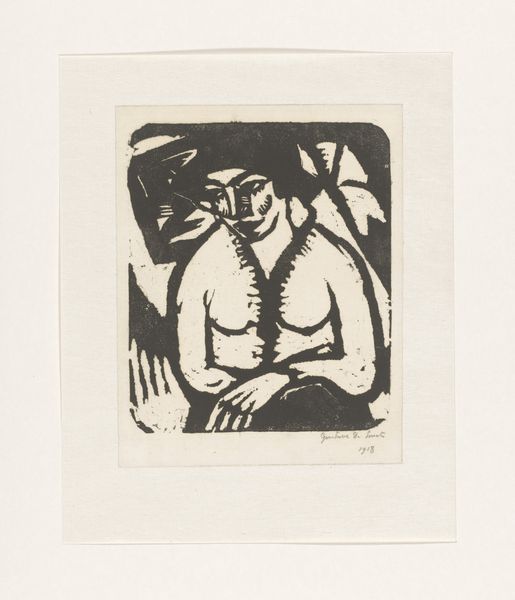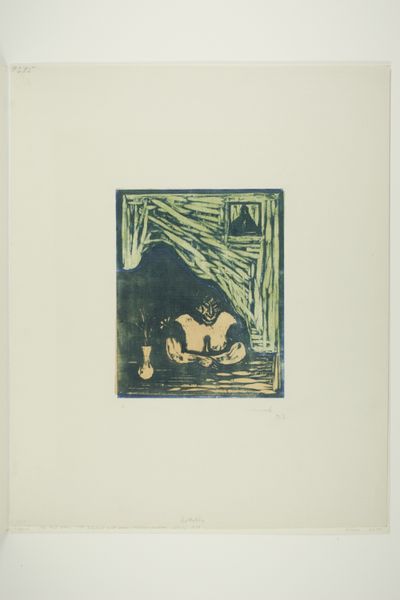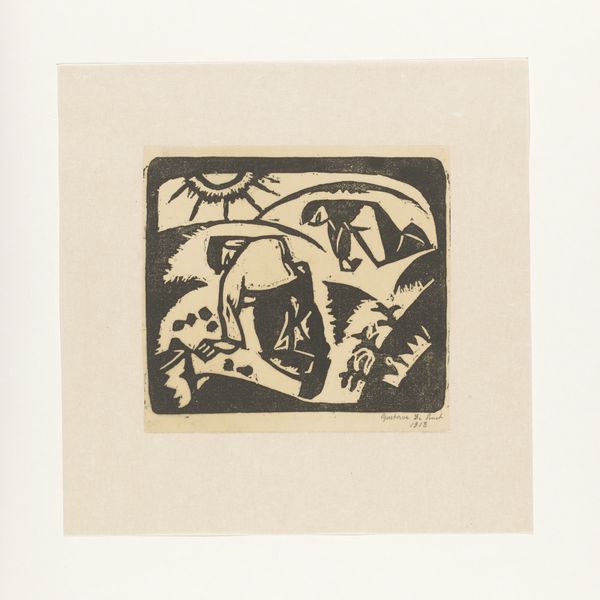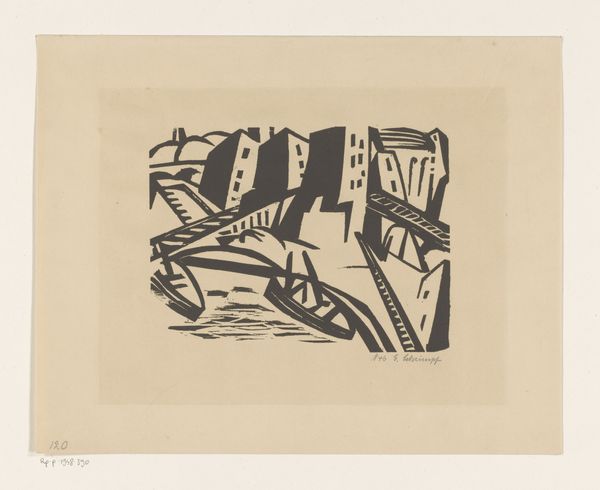
graphic-art, print, linocut, woodcut
#
graphic-art
#
negative space
# print
#
linocut
#
landscape
#
linocut print
#
expressionism
#
woodcut
Dimensions: height 189 mm, width 207 mm
Copyright: Rijks Museum: Open Domain
Curator: This is Gustave De Smet's "Landschap," created in 1918, during a pivotal period of upheaval in Europe. It's a compelling example of his Expressionist landscapes. Editor: My first impression is one of starkness. The sharp contrasts between the black and white give it a sense of drama, almost anxiety. The scene is very simplified, just basic forms. Curator: The simplification is key. De Smet was interested in reducing the landscape to its essence. What do you think he was expressing during this turbulent time in Belgium's history? Editor: The woodcut medium speaks volumes, doesn’t it? It was a technique closely associated with social and political expression. The roughness embodies the working classes and anti-establishment sentiment that artists of that time expressed. Curator: Precisely! His work challenges traditional landscape painting. The way negative space becomes as important as the defined shapes is also important to note. Consider the houses clustered tightly together in the center of the composition. Editor: Yes, that’s very striking. I'm thinking about ideas around urbanization and community—what that meant to people living through that era. I find myself focusing on the starkness. There is also an emptiness and absence of humanity, or hope, in the way that he has simplified the structures to an almost abstract level. Curator: And how do you think these sentiments play into ideas of national identity for Belgians living under German occupation? Does it symbolize resilience or loss? Editor: I suppose it is both. What a stark expression of a complex political situation to capture in a single frame! Curator: Exactly. De Smet uses this visual language to express feelings and ideas about a community navigating national and political struggle. Editor: I'll never look at a simple landscape the same way again. Curator: That's the power of art, to see how societal factors influence the final product and challenge us to do more research and learn!
Comments
No comments
Be the first to comment and join the conversation on the ultimate creative platform.
